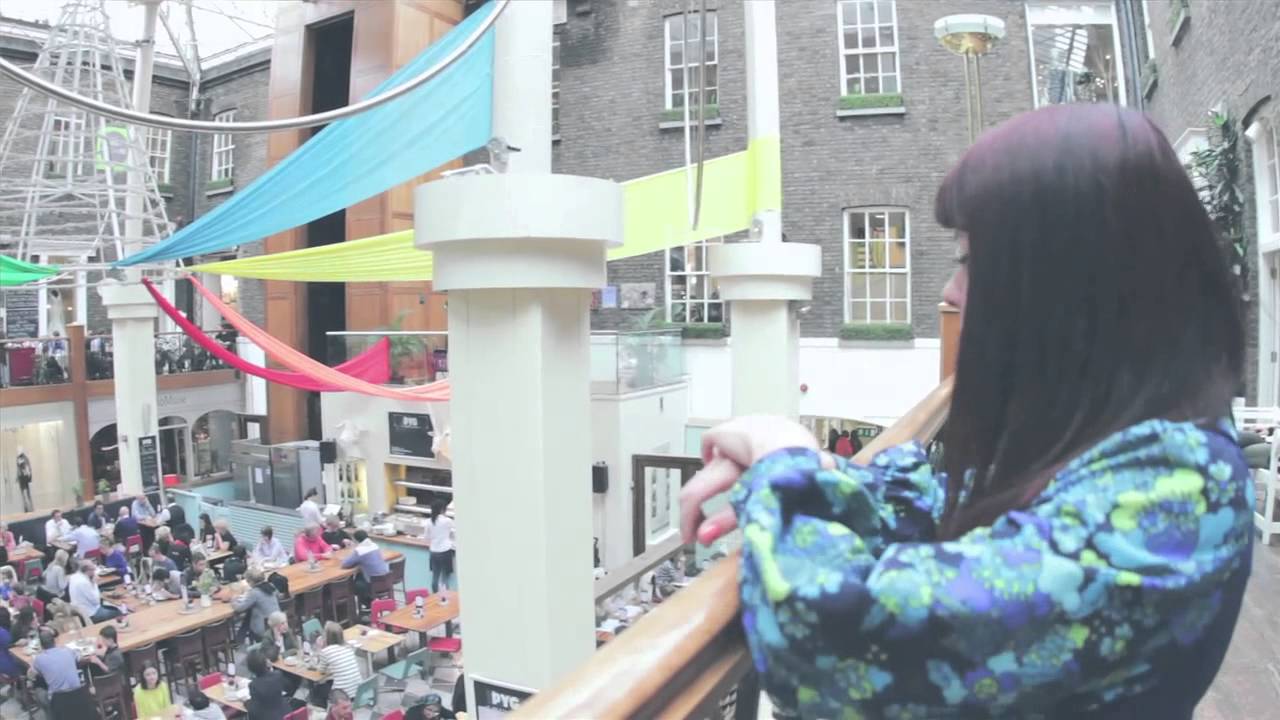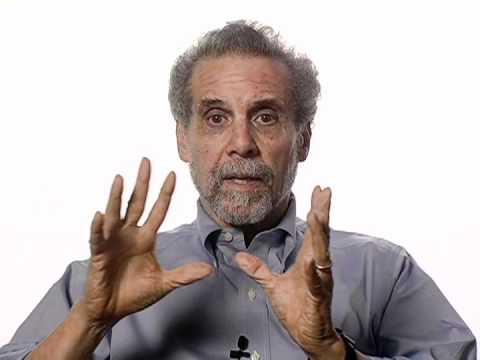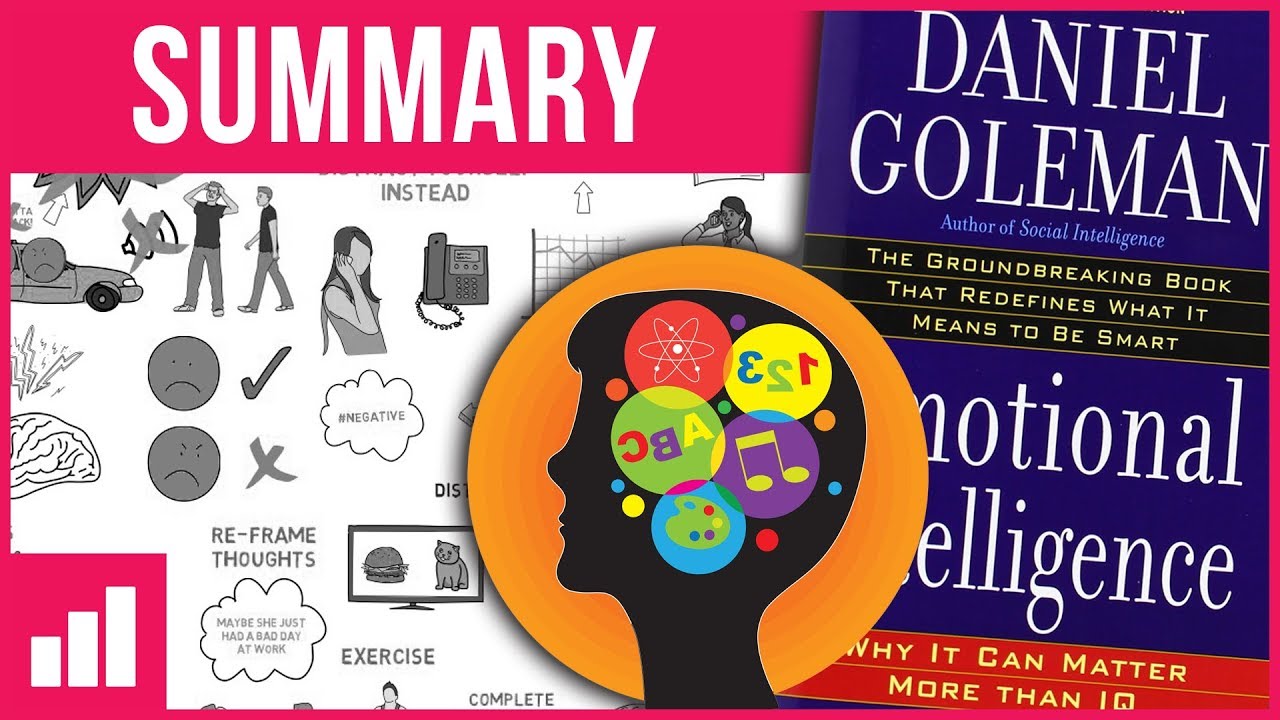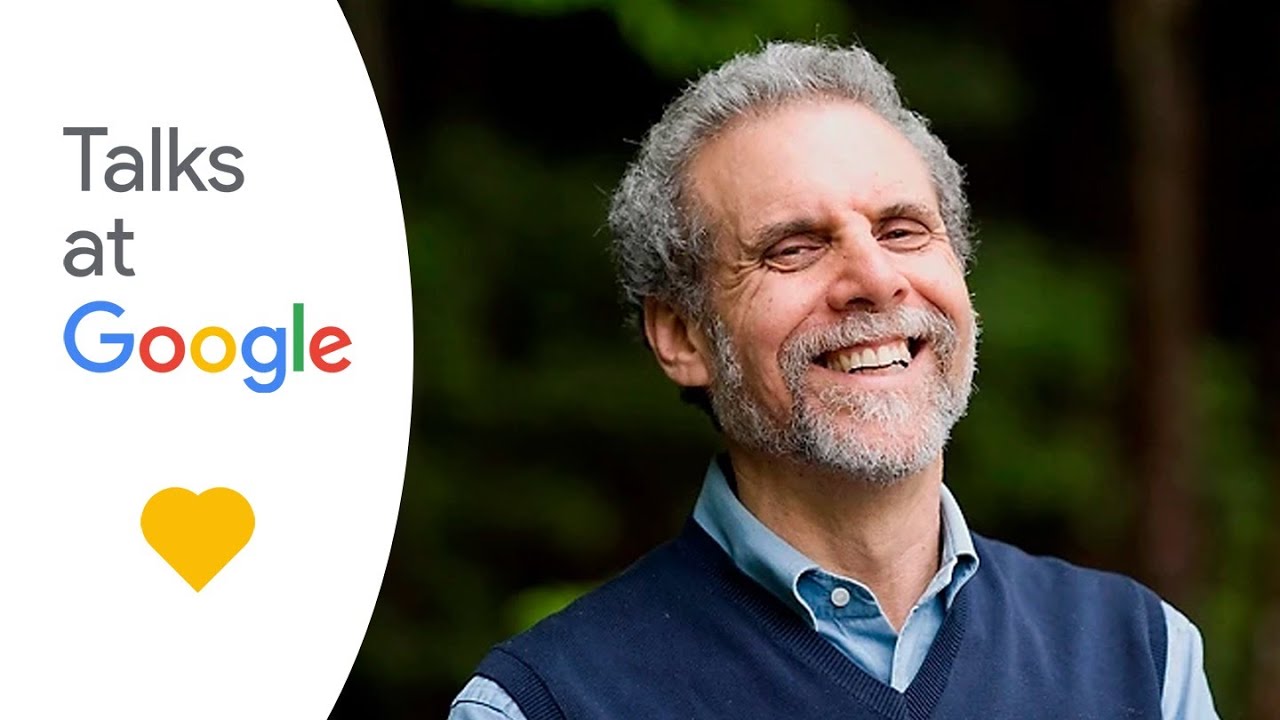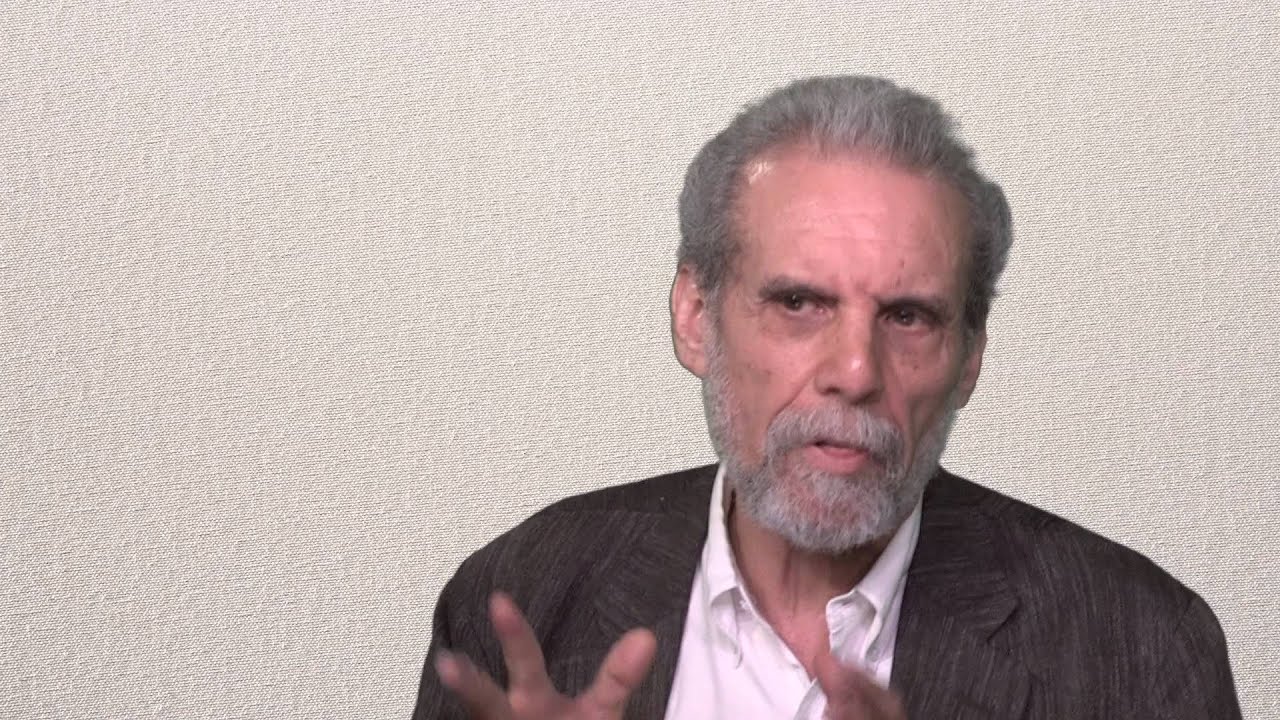Creative Quarters, bringing beauty and business together
The Institute presented the new collection of the organizers and cultural spaces, creative workshops and stores in Bucharest’s Creative Quarter, through a map that will be delivered in 5.000 printed copies.
The initiative highlights Bucharest’s creativity and cultural effervescence, focusing on one of the most vibrant and well-connected areas of the city. The project brings together creative businesses, artists, organizers and cultural institutions in order to develop the right conditions for creation, production, distribution and entertainment.
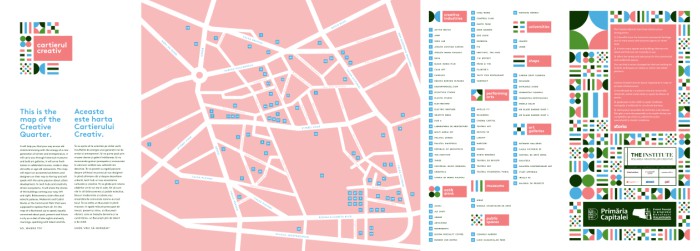
The map reunites 82 interest points that have been identified and mapped through a process of vast documentation that had the purpose of establishing a foundation for the creative network that will bring together the particular visions in the coherent development of the area. The interest points were grouped taking in consideration the spaces’ functions in: 8 art galleries, 27 workshops and creative studios, 20 pubs, 2 museums and 2 universities, 12 spaces dedicated to the scene’s arts, 8 stores and 3 public interest spaces for the users of the first edition of the Creative Quarter map.
In the context of the Bucharest’s novelties, we took a look at some of Europe’s most interesting Creative Quarters:
London
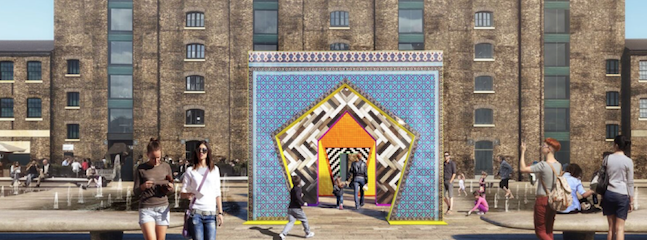
The King’s Cross Creative Quarter brought together pop-up design events, spectacular architecture and the best places to eat, drink, shop and stay during the London Design Festival. King’s Cross has firmly established itself as London’s premier design hub. During the London Design Festival, King’s Cross plays home to a number of cutting-edge exhibitions, installations and events.
Moreover, urban developers Knight Dragon has announced that it is creating London’s first ever purpose-built district for the creative industries. The Design District will be located in the heart of Greenwich Peninsula and will provide a permanent base for over 1,800 of London’s creatives in a range of architect-designed workspaces at affordable rents. The regeneration plan will see a complex of 16 custom-made buildings built next to the O2 Arena and North Greenwich tube station on the Greenwich peninsula that will create a wide range of workspaces for creatives from workshops to artists studios and flexible desk space.
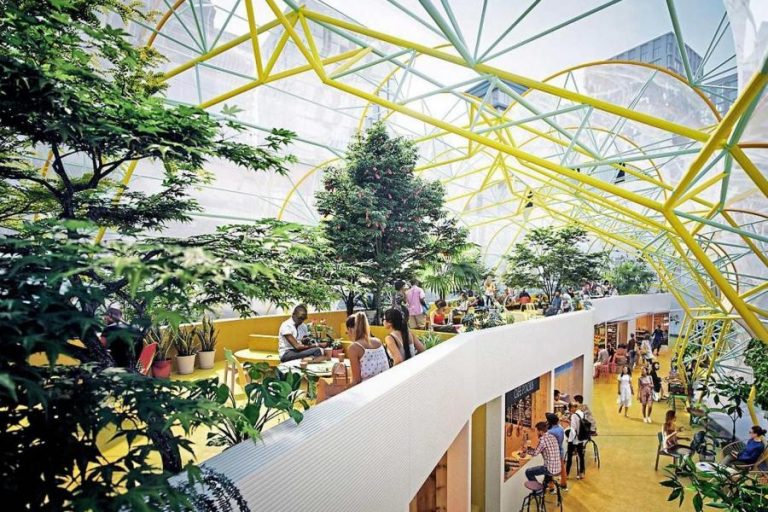
“The creative industries have always been part of the lifeblood of London and the engine room of its current and future success story, whether it is fashion, art, music or theatre. The fact that we’re building something new and shiny does not make it sterile. Most creatives want a nice clean, safe space in a cluster but want it at an affordable level,” said Richard Margree, chief executive of Knight Dragon, for “Evening Standard”.
Dublin
The Creative Quarter is one of the neighborhoods that has emerged stronger than ever through the last several years of recession in Dublin. You’ll find Irish design, Irish food, and lots of Irish people doing their shopping and meeting friends.
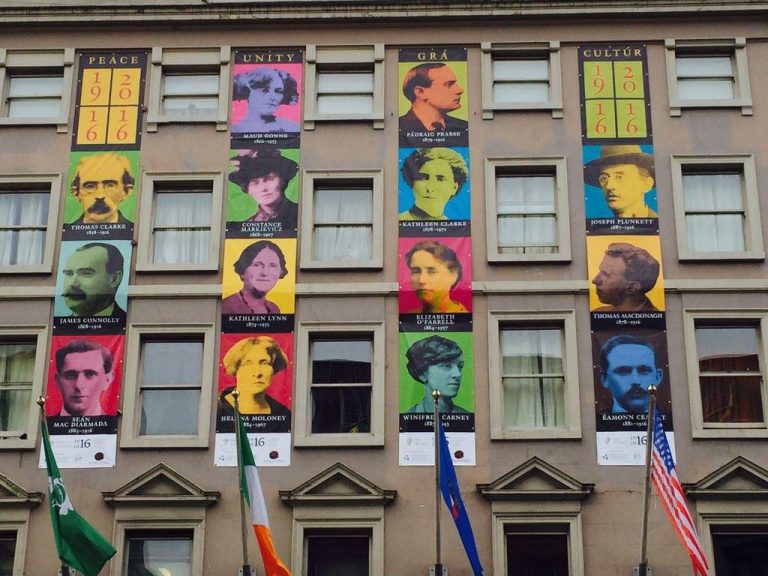
Dublin’s Creative Quarter is a hub of creativity, innovation and design, with plenty of exciting places to see including the Powerscourt Townhouse Centre, The George’s Street Arcade and meandering Wicklow Street. “The area dates back to the 18th Century and in 1881 Dublin’s and perhaps the world’s the first purpose built Victorian Shopping Centre, called the South City Markets was constructed. This beautiful red-brick listed building still attracts crowds of shoppers, under the new name of the George’s Street Arcade. In the surrounding streets there is eclectic mix of artisan boutiques, galleries, cafés & restaurants and creative businesses. Dublin’s Creative Quarter stretches from South William Street, to South Great George’s Street and is one of the best places in the city to relax, shop and soak up the true vibe of Dublin,” writes www.dublinvisitorcentre.ie.
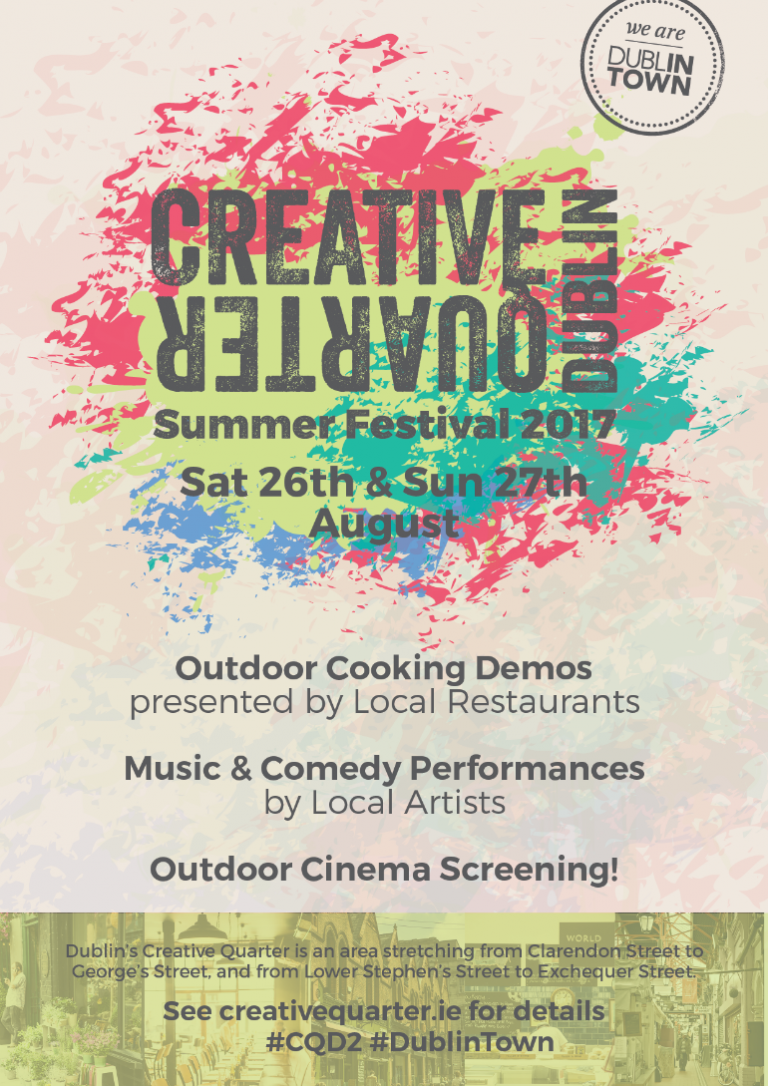
This summer, August 26th (1pm – 8pm) and August 27th (12pm – 6pm), in celebration of the Creative Quarter District, DublinTown and local businesses have come together to showcase the great services they provide through a FREE festival. the Creative Quarter Festival has a jam-packed line up of events with on-street cooking demonstrations, fashion shows, comedy, pop up stalls from local businesses and even an outdoor movie screening.
More one can read here.
Nottingham
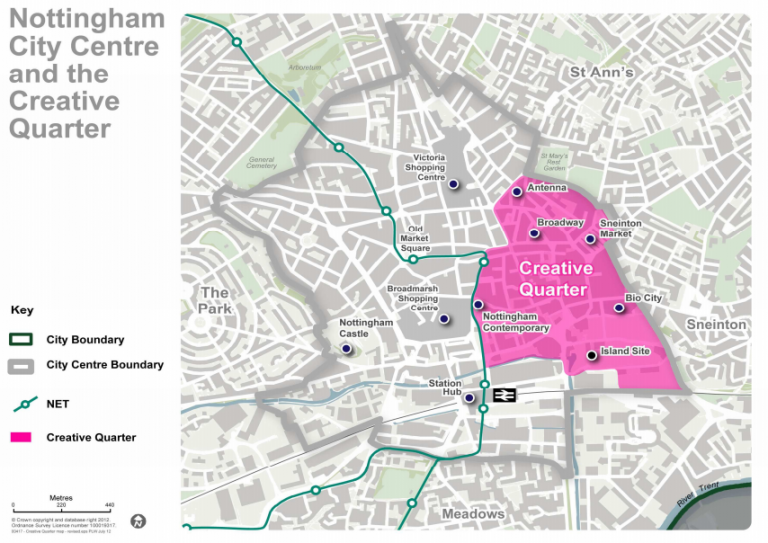
According to creativequarter.com, 10% of the UK’s best creative companies are in Nottingham’s Creative Quarter with App Institute, GameCity, Jeanie Finlay, Lockwood Publishing and Wellington Films listed in the Creative England 50 report (CE50).
CE50 celebrates the best companies and brightest creative talent leading the pack for creative industries across England and the 50 were chosen by a panel of industry experts and it includes a wide selection of the country’s best creatives: all the way from filmmakers and production companies to marketing software firms and independent games studios.
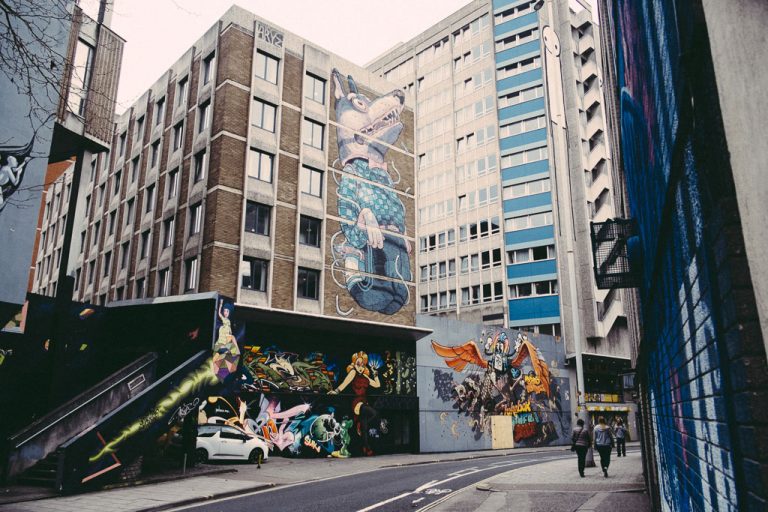
Moreover, Nottingham’s Creative Quarter (CQ), the unique enterprise hub leading the transformation of the city’s economy, won the Enterprising Britain Award for Improving the Business Environment in 2015. The Enterprising Britain Awards is known for recognizing organisations, businesses and agencies which are making Britain the best place in the world to set up a business and grow. The ‘Improving the Business Environment’ category is awarded to the organisation that in the past two years has gone furthest in enhancing the environment for business growth in their area.
The 2016 demographic figures show that Nottingham is an extremely youthful city; 28 per cent of Nottingham’s residents are aged between 18 and 29 – with full-time university students making up approximately one eighth of the total population. Nottingham is a vibrant and lively city with a diverse range of unique cultural attractions for residents and visitors to enjoy. These attractions include: Old Market Square, Sneinton Market, Nottingham Contemporary, Nottingham Castle, Albert Hall, Motorpoint Arena Nottingham, The Theatre Royal, Royal Concert Hall, Nottingham Playhouse and Broadway Cinema.
Munich
Looking into the future, Munich is set out to become one of the greatest creative quarters out there. Munich was declared an art metropolis already in the 19th century. Due to the city’s enormous growth, the demand for residential and commercial space on the few remaining urban surfaces is very great. Affordable surfaces for artists and cultural producers are scarce.
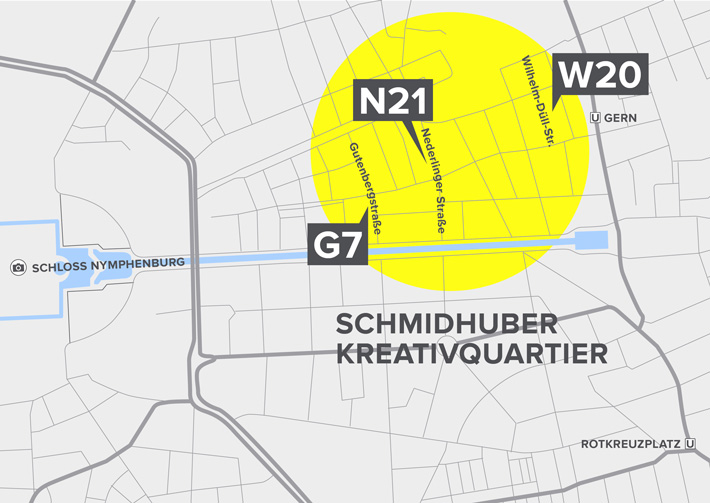
Munich is now developing a creative quarter, not only to maintain itself as a city of the arts, but also to reformulate itself as a creative city. This quarter will offer the free scene of contemporary art and actors in the creative industry space for development, production and presentation. A suitable piece of land for the purpose was found in a former military and industrial area. The 20 hectare area is located in the middle of the city. A lively residential area, the Olympia Park, the Munich University of Applied Sciences and the Goethe-Institut are located in the immediate vicinity. Buildings on this piece of land have long been enlivened through interim use by artists.
15 Things you might not know about Daniel Goleman
Daniel Goleman is one of the world’s renowned psychologists. He was a speaker at BRAND MINDS 2018.
BRAND MINDS is The Central and European Business Summit taking place in Bucharest, Romania.
Daniel Goleman is an internationally known psychologist who lectures frequently to professional groups, business audiences, and on college campuses. As a science journalist Goleman reported on the brain and behavioural sciences for The New York Times for many years.
Here you can find some pieces of information you might not know about Daniel Goleman:
1.His 1995 book, Emotional Intelligence was on The New York Times bestseller list for a year-and-a-half, with more than 5,000,000 copies in print worldwide in 40 languages, and has been a best seller in many countries. Apart from his books on emotional intelligence, Goleman has written books on topics including self-deception, creativity, transparency, meditation, social and emotional learning, eco-literacy and the ecological crisis.
2. The Harvard Business Review called emotional intelligence— which discounts IQ as the sole measure of one’s abilities — “a revolutionary, paradigm-shattering idea” and chose his article “What Makes a Leader” as one of ten “must-read” articles from its pages.
3. “Emotional Intelligence” was named one of the 25 “Most Influential Business Management Books” by TIME Magazine. The Financial Times, Wall Street Journal and Accenture Insititute for Strategic Change have listed Goleman among the most influential business thinkers.
4. Goleman is a co-founder of the Collaborative for Academic, Social, and Emotional Learning (www.casel.org), originally at the Yale Child Studies Center and now at the University of Illinois at Chicago. CASEL’s mission centres on bringing evidence-based programs in emotional literacy to schools worldwide.
5. He currently co-directs the Consortium for Research on Emotional Intelligence in Organizations (www.eiconsortium.org) at Rutgers University. The consortium fosters research partnerships between academic scholars and practitioners on the role emotional intelligence plays in excellence.
6. Goleman is a board member of the Mind & Life Institute, which fosters dialogues and research collaborations among contemplative practitioners and scientists. Goleman has organized a series of intensive conversations between the Dalai Lama and scientists, which resulted in the books Healthy Emotions, and Destructive Emotions. He is currently editing a book from the most recent dialogue on ecology, interdependence, and ethics.
7. His most recent book, Leadership: The Power of Emotional Intelligence, offers an up-to-date summary of his thinking on leadership by collecting key excerpts from his books together for the first time in one volume with his articles from the Harvard Business Review. These include “What Makes a Leader? and “Leadership that Gets Results.”
8. Goleman’s other recent book, The Brain and Emotional Intelligence: New Insights gathers together recent findings from brain research and other sources on topics ranging from creativity and optimal performance, the brain-to-brain connection in leadership, and to how to enhance emotional intelligence itself.
9. His work as a science journalist has been recognized with many awards, including the Washburn Award for science journalism, a Lifetime Career Award from the American Psychological Association, and he was made a Fellow of the American Association for the Advancement of Science in recognition of his communicating science to the general public.
10. Recruited by the New York Times to cover psychology and related fields, in 1984 he began a twelve-year sojourn. He learned much about science journalism from his editors and colleagues, a talented crew on the science desk, and the Times offered remarkable access and visibility. But he found that his urge to write about ideas with impact sent him in directions that did not always fit what the Times saw as news.
11. His wife Tara and him tried to spend a good deal of their free time in meditation retreats or travelling together to places they enjoy that nourish this side of their lives. “Life’s simple pleasures—a walk on a beach, playing with grandchildren, a good conversation with a friend—have more appeal to me than professional honours or ambitions,” said Goleman.
12. According to him, vitality arises from sheer human contact, especially from loving connections. This makes the people we care about most an elixir of sorts, an ever-renewing source of energy. “The neural exchange between a grandparent and a toddler, between lovers or a satisfied couple, or among good friends, has palpable virtues…the practical lesson for us all comes down to, Nourish your social connections,” he added.
13. He is twice a Pulitzer Prize nominee. Moreover, The Wall Street Journal ranked him one of the 10 most influential business thinkers and he was named on the 2011 and 2013 Thinkers50‘s editions and a top business guru by Accenture Institute for Strategic Change. His article “ What Makes a Leader?” remains the most requested reprint in the history of Harvard Business Review.
14. Goleman’s newest book, Altered Traits: Science Reveals How Meditation Changes Your Mind, Brain and Body, is co-written with Richard Davidson and will be released September 5, 2017. Through cutting edge research, Goleman and Davidson explore how meditation and mindfulness can achieve real, positive, and lasting mental and behavioural change.
15. In addition to his numerous professional and academic achievements, Goleman stresses how important his private and personal life is to him on his personal website. “While a bio like this focuses on one’s public life, I find that over the years my private life has grown increasingly important to me, particularly as the years allow me to spend less time running around and more time just being. I find more and more that what satisfies me has little to do with how well one or another book does— although the good works I participate in continue to matter much,” he confesses.
Are you a #worldchanger?
Come to BRAND MINDS 2020!
Here are our first confirmed speakers; we will be announcing more speakers in the coming months so stay tuned!
Malcolm Gladwell, Martin Lindstrom and Michio Kaku

Best Cities For Young Entrepreneurs
Being an entrepreneur is never easy, either you are young and have the freshness and power to work on your side, along with initiative and courage, or a little more mature and you already know very well the market you are trying to penetrate and succeed on. Entrepreneurship brings a set of challenges for every type of business, therefore choosing the city to operate from might be one of the most important decisions one might take. NerdWallet, quoted by Inc.com, has a few suggestions. The personal finance site recently crunched through numbers from the Small Business Administration, the Census Bureau, and the Bureau of Labor Statistics among other sources to uncover the best cities with thriving communities of educated, young entrepreneurs. Bonus points were awarded to places that were actually affordable.
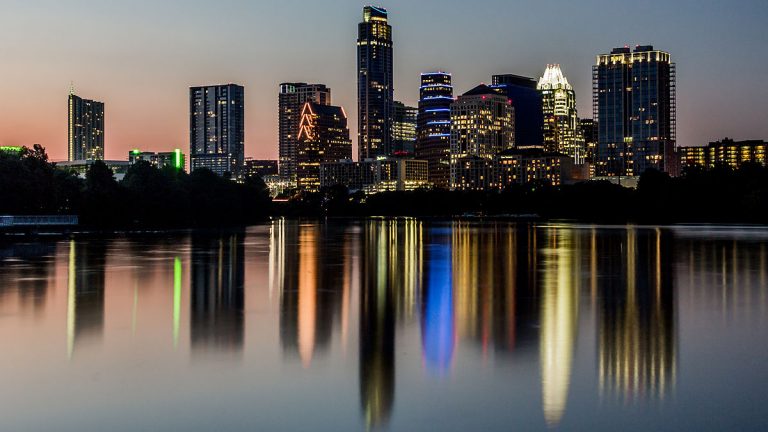
- Austin, Texas
- San Francisco-Oakland, California
- Salt Lake City, Utah
- Denver, Colorado
- Minneapolis-St.Paul, Minnesota
- Seattle, Washington
- Madison, Wisconsin
- Midland, Texas
- Boston, Massachusetts
- Fargo, North Dakota
More explanation and results can be easily found here.
Entrepreneurship is also the rare area of business where youth can be an advantage. Whereas established companies typically look for experience when they hire, a start-up business can benefit from the fresh perspectives and raw energy of younger adults. Younger people like Millennials also have less to lose in terms of an established career and salary, and so they can be more willing to put what they have at risk to create a new business. As people grow older, they tend to lose this appetite for risk.
The data is also supported by a new research from MoneyRates.com that revealed also Texas and Florida offer the best economic climates for young entrepreneurs. Seven of this year’s 10 best cities for young entrepreneurs are located in the Lone Star or Sunshine state, proving that smaller cities have a lot to offer young entrepreneurs who launch their startups outside of major hubs like San Francisco, New York and Chicago. The explication being the fact that “big cities are more likely to take entrepreneurship for granted while smaller cities typically offer incentives that make life as an entrepreneur easier and more attractive”, as Zac Carman writes for entrepreneur.com. Based on the criteria examined, MoneyRates.com named these 10 cities the best for young entrepreneurs in 2016:
- Austin/Round Rock, Texas
According to the U.S. Census Bureau, Austin/Round Rock is the third-fastest-growing metropolitan area in the nation. Additionally, it is one of the more well-educated areas of the country, with more than one-third of its population having a bachelor degree.
- Raleigh, North Carolina
The city is one of the 10 fastest-growing in the U.S., and boasts the highest number for the proportion of the population with at least a bachelor’s degree.
- Midland, Texas
The city is the second fastest growing in the U.S. and ranks second in young adult affluence.

- Houston/The Woodlands/Sugar Land, Texas
Houston has a high level of young adult affluence, and benefits from Texas’ business-friendly tax policies.
- Crestview/Fort Walton Beach/Destin, Florida (tie)
Because this area, which has one of the highest levels of young adult affluence, is located near a junction with three major highways, it provides great opportunities for business activity. Additionally, Florida has one of the nation’s lowest business tax rates.
- Odessa, Texas (tie)
Odessa ranked fourth nationally in both overall growth rate and young adult affluence.
- Sioux Falls, South Dakota
South Dakota has the second-lightest business tax burden in the country, and Sioux Falls ranks in the top 10 nationally for young adult affluence.
- The Villages, Florida
Even though this is a retirement community, The Villages has the fastest growth rate of any city in the nation. This presents a lot of opportunity for businesses that cater to senior citizens.
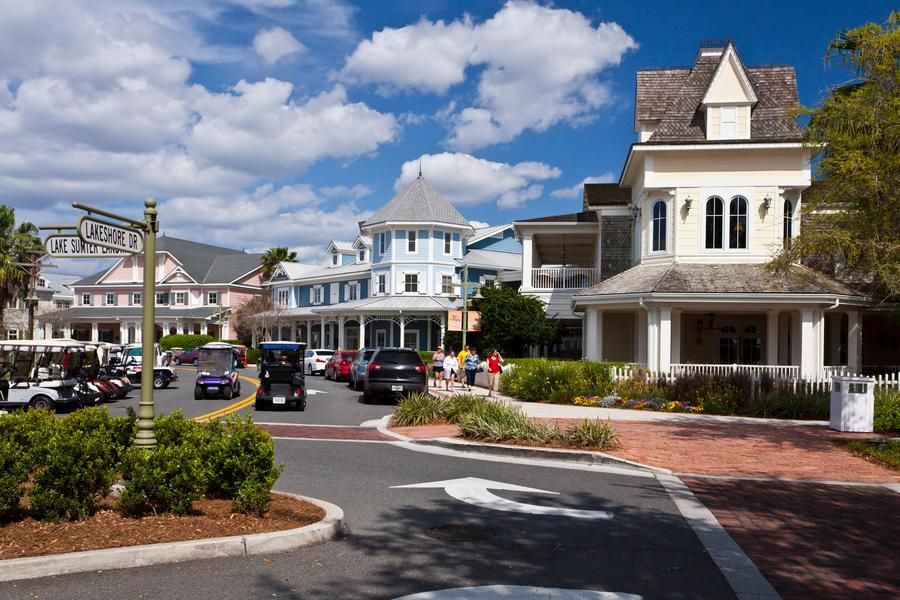
- Denver/Aurora/Lakewood, Colorado
The Denver area ranks in the top 10 for educational attainment and young adult affluence. Additionally, it has a healthy growth rate.
- Orlando/Kissimmee/Sanford, Florida
Orlando ranks in the top 10 because of its rapid population growth and favorable business tax climate.
But what about Europe? Nesta launched in 2015 the European Digital City Index (EDCi), a ranking intended to measure how well different cities across Europe support startups and scale-ups in digital industries. Last year, as part of Global Entrepreneurship Week, they launched the 2016 version of the EDCi, which again describes the ‘fertility’ or attractiveness of different European cities for digital entrepreneurs.
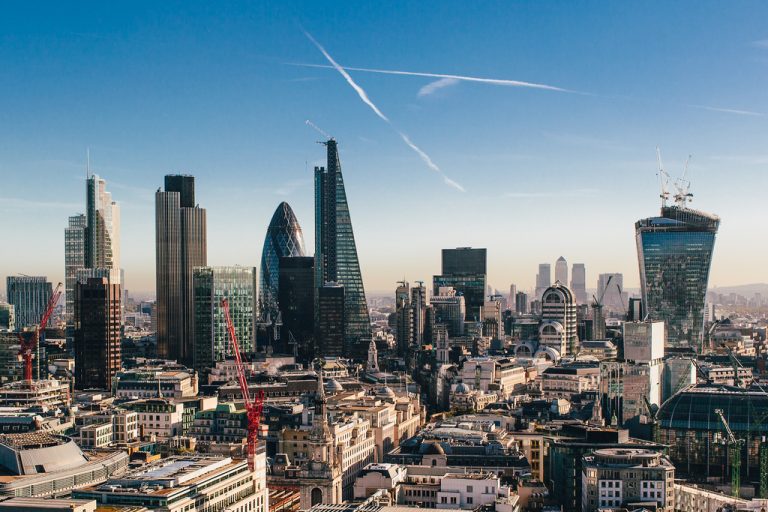
The city that leads in London, but rankings are very close, especially towards the top, with a fraction of a percentage point separating London from close contender Stockholm. Stockholm performs extremely well for its size, with superb digital infrastructure and a highly digitally skilled population; companies like Skype, Spotify, Klarna, King and Mojang are the result. The highest new entrant is Bristol, which joins the list in 13th place, and scores particularly well due to its receptive entrepreneurial culture and local business environment, while Bucharest ranks only 52 in this top 60.
